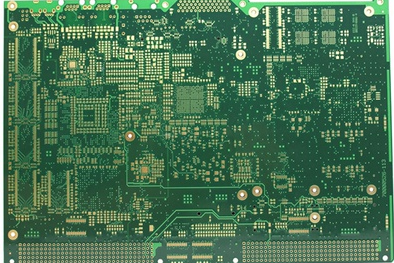The characteristics of the SMT placement process can be compared with the traditional through-hole insertion technology (THT). From the perspective of assembly process technology, the fundamental difference between SMT and THT is "sticking" and "inserting." The difference between the two is also reflected in all aspects of the substrate, components, component shape, solder joint shape and assembly process method.
THT uses leaded components. The circuit connection wires and mounting holes are designed on the printed board. The component leads are inserted into the pre-drilled through holes on the PCB, and then temporarily fixed, wave soldering is used on the other side of the substrate. The brazing technology performs welding to form reliable solder joints and establish long-term mechanical and electrical connections. The main components and solder joints of the components are respectively distributed on both sides of the substrate. With this method, since the components have leads, when the circuit is dense to a certain extent, the problem of reducing the volume cannot be solved.

At the same time, the faults caused by the proximity of the leads and the interference caused by the lead length are also difficult to eliminate.
The so-called surface assembly technology (process) refers to the chip structure components or miniaturized components suitable for surface assembly, placed on the surface of the printed circuit board according to the requirements of the circuit, and soldered by reflow soldering or wave soldering. The process is assembled to form the assembly technology of electronic components with certain functions. On the traditional THT printed circuit board, the components and solder joints are located on both sides of the board; while on the SMT circuit board, the solder joints and components are on the same side of the board. Therefore, on SMT printed circuit boards, through holes are only used to connect wires on both sides of the circuit board, the number of holes is much smaller, and the diameter of the holes is much smaller. In this way, the assembly density of the circuit board can be greatly improved.
Compared with the way of through-hole inserting components, surface assembly technology has the following advantages:
(1) Realize miniaturization. The geometric size and volume of SMT electronic components are much smaller than those of through-hole plug-in components, which can generally be reduced by 60% to 70%, or even by 90%. The weight is reduced by 60% to 90%.
(2) The signal transmission speed is high. The structure is compact and the assembly density is high. When double-sided mounting on the circuit board, the assembly density can reach 5.5-20 solder joints/cm., Due to the short connection and low delay, high-speed signal transmission can be realized. At the same time, it is more resistant to vibration and shock. This is of great significance to the ultra-high-speed operation of electronic equipment.
(3) Good high frequency characteristics. Since the components have no leads or short leads, the distribution parameters of the circuit are naturally reduced and radio frequency interference is reduced.
(4) Conducive to automated production, improving yield and production efficiency. Due to the standardization and serialization of chip components and the consistency of welding conditions, the automation of SMT is very high, so that component failures caused by the welding process are greatly reduced and reliability is improved.
(5) The material cost is low. Now, except for a small number of varieties that are difficult to chip or package with particularly high precision, the packaging cost of most SMT components is lower than that of iFHT components of the same type and function, and the sales price of SMT components follows. Lower than THT components.
(6) SMT technology simplifies the production process of electronic products and reduces production costs. When assembling on a printed circuit board, the leads of the components do not need to be reshaped, bent, or cut short, thus shortening the entire production process and improving production efficiency. The processing cost of the same functional circuit is lower than that of the through-hole insertion method, which generally reduces the total production cost by 30% to 50%.